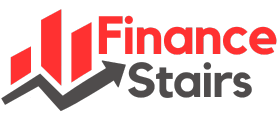Benefits for employees are essential to any organization’s efforts to draw in and retain top personnel. Health and retirement plans are two of the many benefits provided, but they stand out as essential elements that support workers’ general well-being and financial stability. This essay explores the complexities of employee benefits, emphasizing knowledge of health and retirement schemes.
key takeaways
- Well-designed health and retirement packages attract and retain top talent.
- Employees may prepare financially by understanding health and pension tax advantages.
- Workplace diversity is promoted with customized benefits.
- Remote work requires telemedicine, health plan adjustments, and freelancer retirement.
- Keep up with trends like customized benefits and technology integration to strengthen employee benefit programmes.
Value of Benefits to Employees
Drawing in and Holding Talent
Benefits for employees are important in drawing in qualified experts and going beyond wage concerns. Businesses that provide extensive benefits packages demonstrate their dedication to the welfare of their employees, which builds loyalty and lowers attrition.
Worker Contentment and Efficiency
Employee satisfaction increases the likelihood of productivity and engagement. Benefits like health insurance and retirement plans support a happy workplace, which raises productivity and worker satisfaction levels overall.
Health Plans
Health Plan Types
HMO: Health maintenance organization
HMOs provide complete health care via a network of physicians. Employees usually pick a network primary care physician.
PPO: Preferred Provider Organization
PPOs let workers to visit doctors in and out of the network, providing flexibility. However, in-network providers are cheaper.
HDHP: High-deductible health plan
HDHPs have larger deductibles but cheaper premiums. They commonly work alongside HSAs to help workers save tax-free for medical bills.
EPO: Exclusive Provider Organization
EPOs are HMO-PPO hybrids that cover in-network providers without a primary care physician.
Coverage choices and benefits
Health plan coverage alternatives must be understood. These benefits include preventative care, prescription medication coverage, and mental health services. Co-pays, deductibles, and coinsurance are also discussed.
Health Plan Trends
Employers are rethinking health coverage as healthcare changes. Telemedicine, wellness initiatives, and flexible spending accounts are improving employee healthcare.
Plans for Retirement
Retirement Plan Types
- Employees may make pre-tax contributions of a percentage of their pay to the 401(k), a popular retirement plan. Companies have the option to match a portion of these donations.
- Is intended for workers of non-profit organizations, such as schools and certain healthcare facilities, and is comparable to a 401(k).
- The 457(b) plan, which is geared at government workers, allows for tax-deferred contributions and provides flexible withdrawal choices.
Programs for Employer Contributions and Matching
A lot of companies match employee contributions to retirement plans or contribute a specified proportion on behalf of the employer. Employees looking to optimize their retirement savings must understand these contributions and matching schemes.
Employee Eligibility and Vesting
Employee ownership of money donated by the employer over time is referred to as vesting. This section provides information on eligibility requirements and vesting dates, allowing workers to understand when they may receive employer-contributed money penalty-free.
Compliance with Regulations
RISA
ERISA, a federal statute, regulates pension and welfare systems for openness and employee rights. For employee protection and legal compliance, employers must follow ERISA.
Affordable Care Act
ACA changes improve coverage and protect consumers, affecting health plans. Employers must understand ACA compliance to avoid fines and provide comprehensive healthcare.
Instruction and Communication
Communication Among Employees
Maximizing the value of health and retirement benefits for workers requires effective communication. Understanding, participation, and appreciation of the advantages provided are all facilitated by open and honest communication.
Educational Materials
Giving staff members access to instructional materials about retirement and health planning gives them the ability to make wise choices. The significance of workshops, seminars, and internet resources in informing staff members about their advantages is examined in this section.
Implications for Taxes
Benefits of Health Plans for Taxes
Examining the tax advantages linked to health insurance might assist staff members in making well-informed choices. Employees’ total financial burden is lessened when they contribute to flexible spending accounts (FSAs) and health savings accounts (HSAs), which often provide tax benefits.
Tax Implications for Contributions to Retirement Plans
When workers are making financial plans for the future, it is essential that they comprehend the tax consequences of retirement contributions. Traditional 401(k) plan contributions are usually tax deductible, while Roth contributions allow for tax-free retirement withdrawals.
Inclusion and Diversity in Benefit Plans
Customizing Benefits for Different Needs
Considering worker needs is essential when establishing inclusive benefit schemes. Companies must consider offering retirement and health benefits for varied families, lifestyles, and budgets.
Health Inequality Management
Employee benefits with comprehensive healthcare may reduce health disparities. This section examines how organizations adopt health equity initiatives in benefit programs.
Conclusion
Finally, employee benefits, especially health and retirement programs, shape company culture and attract top talent. Employers must adjust their benefits to new trends and regulations. Understanding health and retirement programs helps companies foster employee well-being and financial stability.
FAQs
What are the main characteristics of an HMO in health insurance?
Primary care physicians are usually chosen by HMO members. PCPs must refer patients to specialists. Lower out-of-pocket payments but limited healthcare provider choice are typical of these plans.
How do Roth and standard 401(k) contributions vary in retirement plans?
Roth 401(k) contributions are made after-tax, whereas standard ones are pre-tax. Roth 401(k) withdrawals in retirement are tax-free, whereas standard ones are taxed.
How does ERISA regulate retirement and welfare plans?
ERISA protects employer-sponsored benefit plan members. It requires reporting and disclosure to ensure benefit plan management openness and fairness.
How can EAPs help companies with employee mental health?
Employees with mental health difficulties may get private therapy from EAPs. To promote mental health, several EAPs provide seminars, resources, and referrals.
What employee benefits trends are developing, especially in technology?
Personalized benefits packages using technology and data analytics are growing. Integration of digital platforms improves employee benefit program accessibility and usability.
References
https://www.aihr.com/blog/types-of-employee-benefits/
https://www.forbes.com/advisor/business/employee-benefits/
https://www.thebalancemoney.com/understanding-your-employee-benefits-2386304


